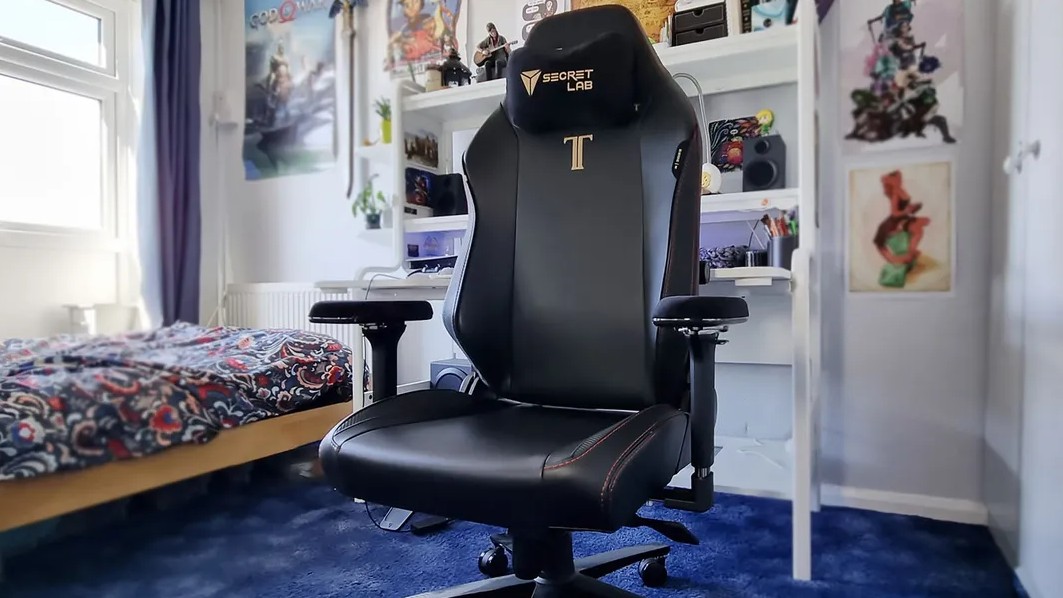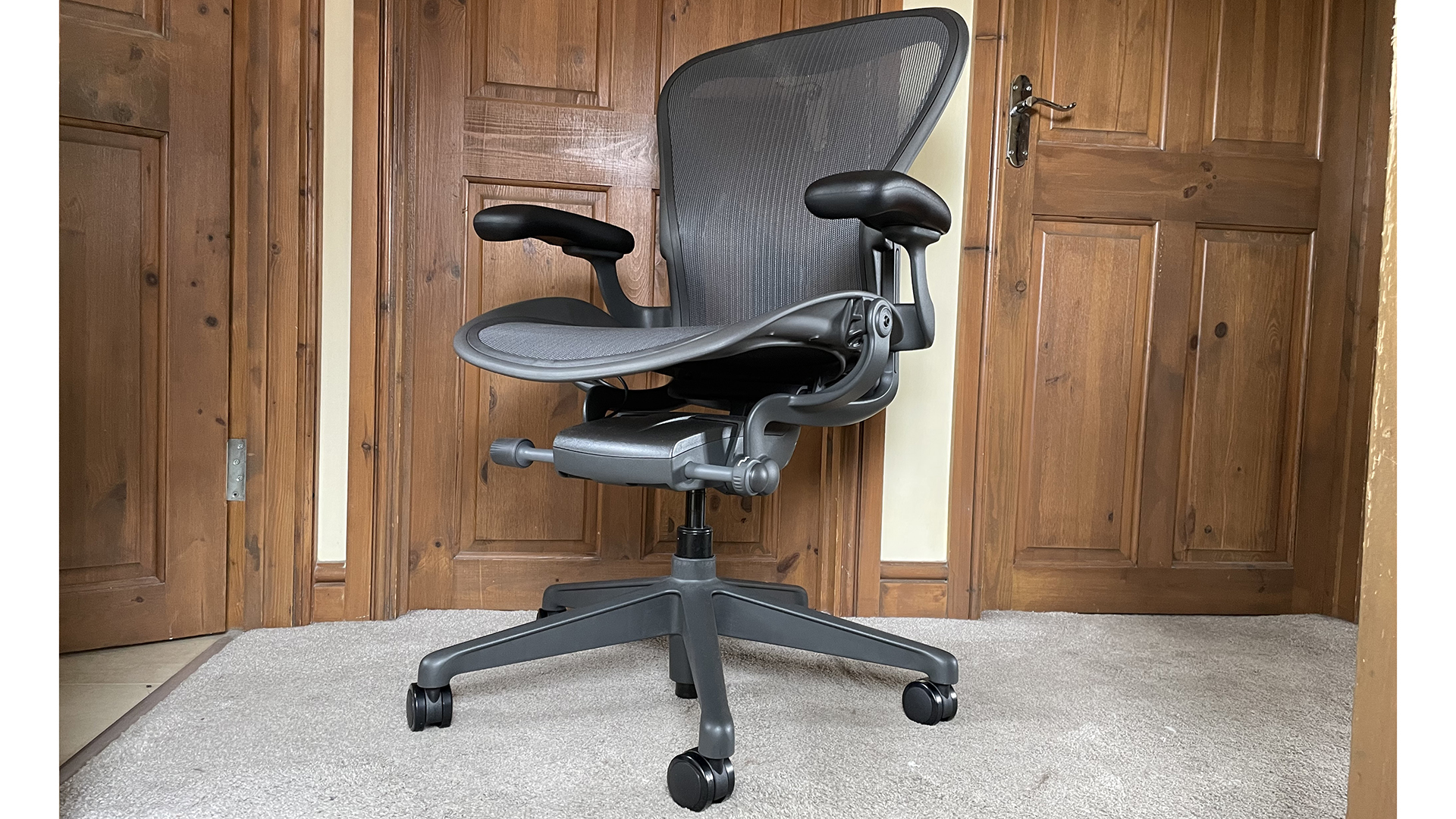Office chair vs gaming chair – which is best for ergonomics?
Everything you need to know when choosing the best type of chair for your creative setup.

If you're a work-from-home creative who also enjoys a gaming session, then you might be asking yourself which is better for your setup: an office chair or a gaming chair? Ultimately, it all comes down to comfort and ergonomics, and not so much the style.
I've tested plenty of office and gaming chairs over the last few years (this includes some of the best affordable office chairs too), and I'll be getting to the bottom of the gaming chair vs office chair debate throughout this guide. If ergonomics is a priority for you, see the best office chairs for back pain, which includes gaming chair options.
1. Design and style

Office chairs come in many forms, offering vastly different aesthetics from each other. Gaming chairs can vary too, but there's usually a distinct 'gaming style' that's obvious at first glance. For example, often a bucket seat, winged backrests and a distinct racing influence, with go-faster stripes or lines in a highlighted colour or even LED lighting (gamers do love their LED lights!)
Whether you like this look comes down to personal taste, but generally a gaming chair looks like a gaming chair, and it can look a bit out of place in an office or studio. In contrast, an office chair tends to be more understated, with no gaudy colours, or oversized logos. And the best office chairs generally look sleek, stylish and more, well, grown-up than gaming chairs.

As for functionality, gaming chairs tend to go big on comfort, and tend to use a lot of padding for this reason. They also often recline further than some office chairs. However, padding and reclining does not necessarily mean great ergonomics, or mean they will be kind to your spine over time. For example, many gaming chairs do not provide dedicated lumbar (lower back) support.
Furthermore, while gaming chairs tend to have a solid back, many office chairs go for mesh backs, which allow air to flow, thus reducing heat and the risk of a sweaty back if you're working on a hot day.
2. Ergonomics
Gaming chairs tend to be kitted out with comfort in mind for longer periods of sitting, although most of them aren't actually very ergonomic. If you're wondering what makes a chair ergonomic, the simple answer is lumbar support.

There are exceptions, of course, and some of the best gaming chairs offer the same level of lumbar support as the best office chairs. For example, when our writer reviewed the Secretlab TITAN Evo 2022 chair, she loved its adjustable features like the lumbar support and backrest, which helped retain good posture. On the whole, though, for effective lumbar support, a good office chair will usually be the better bet.
Something else to note is that several gaming chairs are designed to have a raised front lip on the seat of the chair. This very slightly inclines the legs, which is not the best position for long periods of sitting. Office chairs, on the other hand, tend to have a 90-degree waterfall edge, ensuring your feet stay flat on the ground.

Furthermore, office chairs often include head support and more adjustability than gaming chairs: the X4 Executive leather chair is a good example. And adjustability means there's a good chance of being able to configure the chair so it perfectly fits your shape and build.
3. Durability
Which is likely to last longer: an office chair or a gaming chair? I'd argue this question doesn't have an obvious answer, because it's very much on a case-by-case basis.
On the one hand, many gaming chairs are made from fairly durable faux leather, and this tends to be of higher quality if you pay for a more expensive option. On the other hand, office chairs with mesh backs tend to last long, and more expensive options will usually have sturdier structures and better quality casters.

In short, the amount of money you're spending on a chair and its overall build quality will ultimately be a more important factor for durability than what type of chair it is.
4. Which is best for ergonomics?
Both office chairs and gaming chairs come in many different designs with varying levels of ergonomics. However, in my collective experience reviewing and testing chairs, I've found that office chairs are more likely to provide the lumbar support and adjustability needed to be truly ergonomic.
There will be exceptions, and you will find a gaming chair that hits all the ergonomic notes – the Embody chair from Herman Miller is styled as a gaming chair, and it's an ergonomic hit. But in general, better ergonomics will be found in office chairs.
5. How to sit properly in a chair
Many of us were told as children to avoid slouching, and for good reason. Sitting up straight with your neck in a relaxed, neutral position is the best way to avoid developing bad habits. Your arms should be parallel to the floor, as should your feet, and avoid crossing your legs, at least most of the time, in order to allow correct blood circulation.
You should also aim to sit at about arm’s length from your computer screen with the top of the monitor level with your eyes, which will help to avoid you hunching to look down at your screen. More generally, it's a good idea to take breaks, get up and move around, and change posture during the day.
This will help you stay comfortable since the movement increases blood flow. It can also help keep you alert, more focused, in generally in a better mood. Doing this doesn't have to involve setting a timer or anything too strenuous. It can be as simple as taking quick five-minute breaks when you can, rocking in your chair and changing the angle of the backrest. Ideally, you should also try to take some time to do the recommended desk exercises.

Beren cut his teeth as Staff Writer on the digital art magazine ImagineFX 13 years ago, and has since worked on and edited several creative titles. As Ecom Editor on Creative Bloq, when he's not reviewing the latest audiophile headphones or evaluating the best designed ergonomic office chairs, he’s testing laptops, TVs and monitors, all so he can find the best deals on the best tech for Creative Bloq’s creative professional audience.
